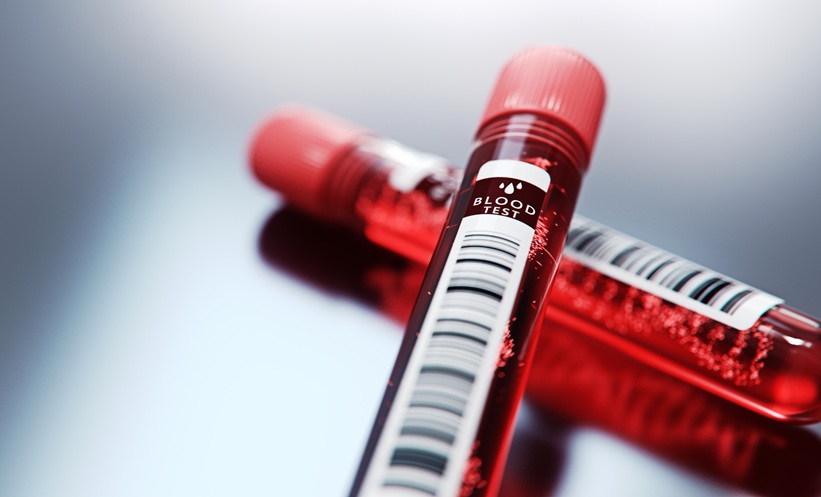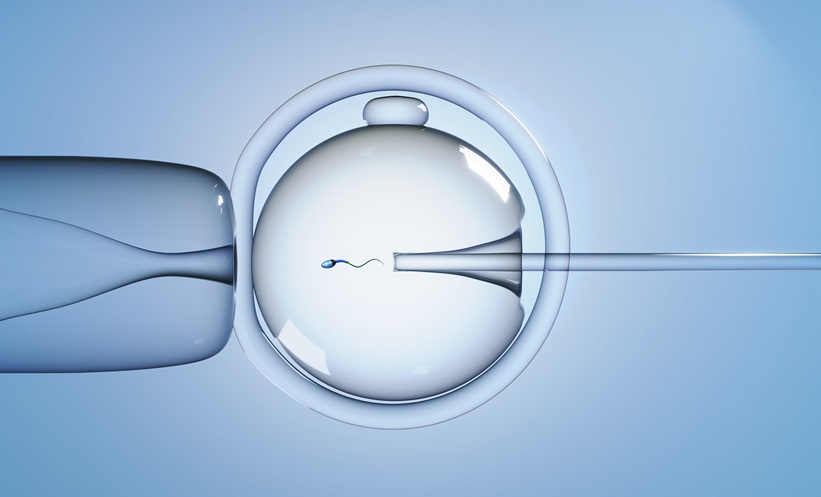Beautiful Barcelona, Spain played host to the Annual Meeting of the European Society of Human Reproduction and Embryology (ESHRE), with the historic city opening her doors to thousands of developmental, reproductive, and embryology specialists. Welcome to the EMJ Reproductive Health review of the 34th Annual Meeting of Europe’s flagship reproductive health and embryology society.
The ESHRE Annual Meeting returned to Spain for a fourth time in 2018 and, as Casa Vicens glistened in the Iberian summer sunshine, Barcelona proved to be a perfect host. The meeting was held at the Barcelona International Convention Centre, located right on the seafront, and there was audible excitement in the air as 12,179 human reproduction and embryology specialists, young and old, from 130 different countries, prepared for Europe’s premier celebration of research and developments within the field.
The spires of Gaudi’s 136-year-old Basílica i Temple Expiatori de la Sagrada Família dominate the Catalan skyline. Famously unfinished, the church is due for completion in 2026. The ESHRE scientific programme, however, is in stark contrast to Gaudi’s masterpiece. Far from incomplete, the event’s comprehensive programme, masterminded by the organising committee, covered a broad range of reproductive health and embryology hot topics. Speaking before the congress, Dr Rita Vassena, head of the local organising committee, highlighted that the 77 sessions on offer during the course of ESHRE 2018’s specially designed programme “cover topics of huge current interest.”
Forty years ago, the face of reproductive medicine was dramatically changed forever following the birth of Louise Brown, the world’s first ‘test tube baby’. It was therefore fitting for Louise, the literal poster-child of assisted reproductive technology (ART), to be in attendance at ESHRE 2018, where the long-term follow-up of children born with the help of ART was placed under the microscope. The outcomes of in vitro fertilisation were not the only key theme throughout ESHRE 2018; intracytoplasmic sperm injection, the topic of the Human Reproduction Keynote Lecture, and the efficacy of in vitro fertilisation add-on therapies were also discussed at length. Alongside the focus on the use and outcomes of ART embryo implantation failure, the modelling of the post implantation stages of embryo development in vitro and preconception genetic testing were both topics of hot debate following the fascinating plenary sessions and poster presentations. ESHRE 2018 broke all previous records with around 1,900 abstracts submitted to the organising committee to be considered for presentation, of which 800 were presented as posters during the 4-day event. Two hundred of the abstracts were presented as special oral presentations, a hand-picked selection of which can be found within the Abstract Review section of this Congress Review. Penned by the researchers themselves, these summaries give a fascinating insight into the latest developments on show at the enormous congress.
Social media is an ever-growing platform that can be utilised for communication and debate; recognising this, ESHRE invited five young reproduction and embryology specialists to take over ‘theESHRE5’ Twitter account. Coming from a range of different backgrounds and specialities, Drs Akemini Umana, Anisha Uberoi, Beatriz Rodriguez Alonso, Michael Rimmer, and Swati Mishra posted their experiences and opinions throughout the course of the congress to great success, reaching not only the delegates in Barcelona but also those that were not able to visit ESHRE this year.
In and amongst the universal celebration of reproduction and embryology research and developments, for a select few there was even more reason to cheer as the annual ESHRE awards were presented. The Basic Science Award for oral presentation was given to Kelle Moley (USA) for her work titled “Pronuclear transfer in zygotes from diet-induced obese mice suggests a cytoplasmic origin of transgenerational transmission of mitochondrial dysfunction leading to cardiac dysfunction in offspring.” New Zealand’s Sarah Lensen was presented with the Clinical Science Award for oral presentation for her work on endothelial scratching during Pipelle® biopsy in in vitro fertilisation (IVF). European researchers were awarded the Basic Science Award for poster presentation and the Clinical Science Award for poster presentation, received by C. Alexandri (Belgium) and Asa Magnusson (Sweden), respectively. The Nurses Award was presented to Morine Cebert (USA) for her work titled: “Facilitators and barriers affecting help seeking of infertile women in the United States: A systematic review”.
The FC Barcelona museum is one of the city’s most popular attractions, welcoming thousands of visitors a day, but for 4 days in July 2018 the Barcelona International Convention Centre stripped the museum of its title as a record-breaking number of delegates arrived to take advantage of the “welcome chance to network with friends and meet colleagues from around the world”, as described by Dr Vassena. For those of you not able to attend this year’s ESHRE Annual Meeting, we are sure this captivating Congress Review will capture the spirit of the event highlighting the key research breakthroughs and summarising the best ESHRE 2018 had to offer.
The Hofburg palace is in danger of being outshone next year as ESHRE 2019 heads to the Austrian capital, Vienna. The EMJ team will be in attendance at the Imperial City to capture all the highlights and revel in the latest reproduction and embryology research and updates.
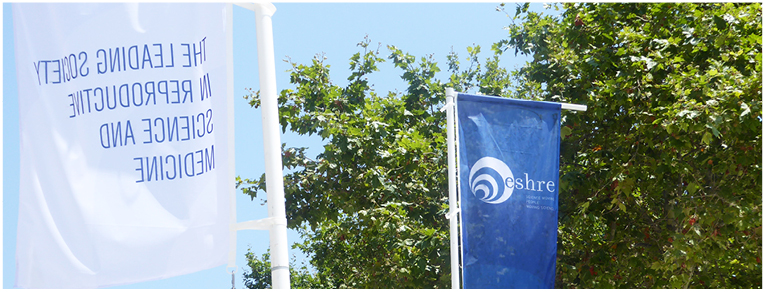
Progress Towards Artificial Ovaries
ARTIFICAL ovaries have been brought one step closer to reality as a result of work undertaken by researchers from the Rigshospitalet, Copenhagen, Denmark. The groundbreaking nature of the research was highlighted by Dr Susanne Pors, Rigshospitalet, who declared: “This is the first time that isolated human follicles have survived in a decellularised human scaffold.” The details of this work were reported in a ESHRE press release dated 2nd July 2018.
Although fertility perseveration treatment via ovarian tissue freezing already takes place, for instance, ahead of radiotherapy or chemotherapy, under the current methodology there is a risk, although slight, of reintroducing the original malignancy when regrafting the original cryopreserved tissue. Dr Pors explained a way to overcome this issue: “A bioengineered ovary would allow the growth and development of reseeded frozen-thawed early stage follicles in a tissue bed which is free of malignancies.”
With this solution in mind, the researchers extracted ovarian tissue from women who were undergoing fertility preservation treatment ahead of cancer therapy. Subsequently, the cells were put through a 3-day chemical process to eliminate the inhabiting cells of the tissue and leave an extracellular matrix scaffold of the original tissue. Following this process, the researchers used DNA and collagen quantification to test decellularisation, which demonstrated the tissues had been completely decellularised. Dr Pors then explained the next stage: “We then found that ovarian cells and early-stage follicles were able to recellularise the decellularised tissue in vitro by successfully repopulating and migrating into the scaffold.” Additionally, the researchers conducted transplantation experiments, using mice, which found survival and growth of early-stage follicles was possible on the decellularised matrix. The researchers noted that future studies are planned to develop this technique further by investigating how best to evaluate follicle quality and how to optimise the procedure.
Prostate Cancer Risk in ICSI-Treated Fathers
SUBFERTILE men could be at a higher risk of prostate cancer, particularly early-onset disease, after treatment with intracytoplasmic sperm injection (ICSI). According to the results of a large registry study presented at ESHRE 2018 and reported in a ESHRE press release dated 3rd July 2018, the incidence of rare and aggressive early-onset prostate cancer was higher for fathers who conceived using ICSI compared to natural conception or in vitro fertilisation (IVF).
The Swedish registry study identified approximately 1.2 million fathers with a firstborn child in Sweden between 1994 and 2014, from whom 3,211 prostate cancer patients were selected for data analysis. Using males who conceived naturally as controls, the results showed that ICSI treatment to aid conception was associated with a statistically significant increased risk of prostate cancer of 47%; this risk was particularly relevant for patients diagnosed at <50 years old, for whom the incidence of prostate cancer was 3-times that of controls (3 patients per 1,000 versus 1 patient per 1,000, respectively). However, the risk of late-onset prostate cancer was not increased following ICSI treatment.
While these results may be alarming, the researchers stressed that the increased prostate cancer risk in the study population was related to the fertility status of the males and not the ICSI procedure, which has no biological impact on the body. Since the risk was higher in infertile men than fertile men, the team hypothesised that this may have been due to a preclinical latent tumour present at the time of ICSI administration, low levels of testosterone, or testosterone supplementation.
Other biases were also taken into consideration to explain these results, such as the increased rate of prostate-specific antigen tests in subfertile men who are candidates for more general health checks, thereby increasing the chance of detecting prostate cancer, and the study’s specific location. For example, since ICSI in Sweden is only indicated in male factor infertility cases, compared to non-male infertility cases in other countries, the fathers identified from the Swedish registries generally had very poor semen quality, which may instead be the causative risk factor. Therefore, while ICSI is not a cause of or risk factor for prostate cancer, it could be considered a predictor for the malignancy, allowing close monitoring and early cancer treatment of these at-risk patients.
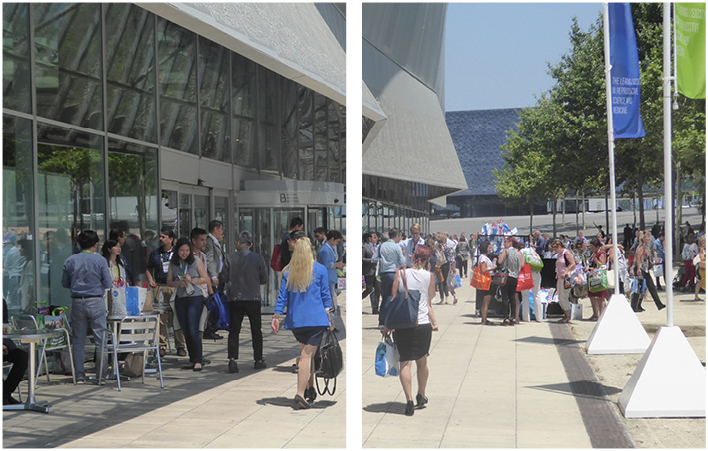
Real-Life Data on Social Egg Freezers Returning for Fertility Treatment
ONLY 7.6% of women who elect to freeze their eggs as an insurance policy against an age-induced decline in fertility, so called ‘social freezers’, return to thaw and fertilise their eggs. According to a ESHRE press release dated 4th July 2018, data from one of Europe’s largest fertility centres presents real-life results on the number of women returning to attempt pregnancy and the success rate of this procedure. Study investigator Dr Michel De Vos, Centre for Reproductive Medicine, University Hospital Brussels, Brussels, Belgium, validated the importance of this study because so “little is known about these social freezers and their reproductive outcomes.”
The study collected data from 563 women who froze their eggs between January 2009 and November 2017. A total of 902 assisted reproduction treatments were carried out to collect eggs, with an average of 8.5 eggs collected and frozen per patient. The mean age of women freezing their eggs was 36.5 years.
Results revealed that only 7.6% (n=43) of women who had their eggs frozen retuned to the clinic and had their eggs thawed, fertilised, and transferred. The mean age of women returning to the clinic was 42 years. Of the returning 7.6%, 43.0% used donor sperm to fertilise their eggs, indicating that the majority of those who returned had found a partner to start a family with. Fourteen of the 43 returning women (32.6%) achieved an ongoing pregnancy after embryo transfer.
With an increasing number of social freezers hoping to combat the anticipated age-related fertility decline, these results begin to paint an important picture of the real-life outcomes for social freezers who return for fertilisation treatment. Dr De Vos did comment, however, that he was unable to deduce “whether their previous decision to undergo oocyte cryopreservation has enhanced the probability of a live birth.” As such, it is hoped that future studies will be able to elucidate the efficacy of freezing eggs before a decline in women’s fertility on future successful live births.
New Data for Immunological Treatment for Pregnancy Loss
UNEXPLAINED miscarriages are often attributed to an immune response whereby the uterus erroneously rejects the embryo or fetus. This theory has led to the development of a number of immunomodulatory treatments, many of which are not evidence-based, including the use of recombinant human granulocyte- colony stimulating factor (rhG-CSF), a licensed cancer medication. Now, as reported in a press release from the ESHRE Annual Meeting 2018 in Barcelona, Spain, a large randomised placebo-controlled study, the RESPONSE trial, has shown this treatment to be of no benefit.
Despite its widespread use, the evidence in favour of rhG-CSF treatment for women with recurrent pregnancy loss is limited to one single-centre randomised trial and four observational studies, spurring researchers from Tommy’s National Centre for Miscarriage Research at the University of Birmingham, Birmingham, UK, and the University of Iowa Hospital and Clinics, Iowa City, Iowa, USA to conduct the present study.
During this study, performed at 21 hospitals in the UK, 150 women were randomised to rhG-CSF treatment (n=76) or placebo (n=74). These women all had ≥3 unexplained miscarriages, were aged 18–37 years, and were aiming to conceive naturally. After 20 weeks, 59.2% of women in the rhG-CSF group and 64.9% in the placebo group had achieved a pregnancy, indicating that the treatment was ineffective; live birth rates were similar in both groups.
“Some studies have suggested statistically significant improvements in clinical pregnancy rates, but we here have high quality evidence that rhG-CSF is not an effective treatment for patients with unexplained recurrent miscarriages,” explained Prof Abey Eapen, University of Iowa Hospital and Clinics.
Reproductive immunology is still a “relatively new” branch of reproductive medicine and treatments derived from this field are mostly experimental, explained Prof Eapen. The RESPONSE trial results, therefore, represent key data in assessing the efficacy of this approach and guiding future research.

An Update on In Vitro Fertilisation
LOUISE BROWN, the first baby born using the pioneering science of in vitro fertilisation (IVF), is now 40 years old. Since this first procedural success in the 1970s, the use of IVF and other assisted reproductive technologies (ART) has exploded. A recent report by the International Committee Monitoring ART (ICMART), reported in a ESHRE press release dated 3rd July 2018, highlighted that >8 million children have been successfully delivered as a result of IVF since 1978.
The ICMART report collected data from regional centres across Europe from 1991–2014 and came to a number of conclusions. The data showed that there was a steep increase in the use of ART therapies during the 23-year time period and that >500,000 babies are born each year as a result of >2 million IVF and intracytoplasmic sperm injection (ICSI) treatment cycles.
Developed in the 1990s, ICSI was originally intended as a strategy to combat male infertility, the ICMART report revealed that European centres continue to favour ICSI over IVF, performing 356,351 and 131,221 treatment cycles, respectively; this treatment modality was initially reserved for cases of male infertility, but it is now also used in non-male cases. Furthermore, it was identified that Spain was the European nation most active in the use of ART (119,875 treatment cycles), closely followed by Russia (110,723 cycles), Germany (96,512 cycles), and France (93,918 cycles), while the UK performs approximately 60,000 cycles annually.
While the number of IVF twin pregnancies has declined to approximately 14%, the number of single embryo transfers has risen from 11% in 1997 to 38% in 2015, with success rates stabilising at around 36% for both IVF and ICSI. The statistics generated by the ICMART appears to show an ever-improving success rate attributed to ART procedures; however, Dr Christian De Geyter, ESHRE, IVF Monitoring Programme Committee Chairman, noted that the availability of ART treatments is inconsistent, with the Danish and Belgian governments offering considerably more treatment cycles than their Italian and Austrian counterparts.
Nuts in the Diet Affect Quality of Sperm
DIET has been suggested to have an influence on the quality and function of human sperm. More specifically, the results of a randomised trial have shown that including nuts as a component of a regular diet improved the quality and function of human sperm. These results are in the context of a general decline in human sperm quantity and quality. This study was reported in a ESHRE press release dated 4th July 2018.
The results of a meta-analysis showed a “significant decline in sperm counts between 1973 and 2011”, with a 1.4% annual decline in sperm concentration and a 1.6% annual decline in total sperm count.1 Therefore, any possible solutions to reverse this trend are of importance. To test the impact of nuts on sperm quality and function, the study investigators conducted a randomised clinical trial across a 14-week period. The study cohort comprised 119 healthy men who were aged 18–35 years old. These men were divided into two groups: one group supplemented their typical Western-style diet with 60 g of mixed almonds, hazelnuts, and walnuts per day, and the second group (the control group) continued eating their typical Western-style diet without additional supplementation.
The men in the nut supplementation group presented with improvements in the parameters associated with male fertility measured by the researchers. Compared to the control group, the nut supplementation group displayed an improvement of approximately 16% in sperm count, 6% in sperm motility, 4% in sperm vitality, and 1% in morphology. Furthermore, the men eating a diet supplemented with nuts also presented with a marked decline in levels of sperm DNA fragmentation, which is a parameter strongly associated with male infertility.
The presenter of the study results, Dr Albert Salas-Huetos, Andrology and IVF Lab, University of Utah, Salt Lake City, Utah, USA, sounded a note of caution that these results could not be extrapolated to the general population, as the study participants were all healthy and ostensibly fertile. However, he commented: “But evidence is accumulating in the literature that health lifestyle changes such as following a healthy dietary pattern might help conception, and, of course, nuts are a key component of a Mediterranean healthy diet.”
References
- Levine H. Temporal trends in sperm count: A systematic review and meta-regression analysis. Hum Reprod Update. 2017;23(6):646-59.
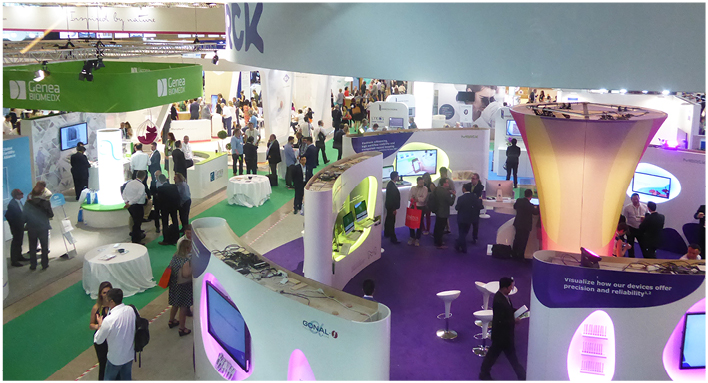
Relationship Instability Behind Majority of Egg Freezing Cases
RELATIONSHIP problems were found to be the principal reason for women freezing their eggs, according to a ESHRE press release dated 2nd July 2018. The study conducted in-depth interviews with 150 women from the USA (n=114) and Israel (n=36) who had elected to freeze their eggs for social reasons.
Interview answers were quantitively analysed and showed that 85% were without partners at the time of egg freezing as a result of being single, divorced or going through a divorce, separated, working overseas, a single mother, and career planning. Planning for a career was the least common answer, even for those who worked for a company with egg freezing insurance. Women with partners (15%) answered with four different circumstances: they were in a relationship with a man who was not ready to have children, in a relationship that was new or uncertain, with a partner who refused to have children, or with a partner who had multiple partners.
Summarising the results, Prof Marcia Inhorn, Yale University, New Haven, Connecticut, USA, explained that “Most of the women had already pursued and completed their educational and career goals but by their late 30s had been unable to find a lasting reproductive relationship with a stable partner. This is why they turned to egg freezing.”
With elective egg freezing being the fastest growing services in many fertility clinics, and egg freezing cycles predicted to increase from 5,000 in 2013 to 76,000 in 2018, Prof Inhorn emphasised the importance of clinics being mindful of why women are freezing their eggs, irrespective of career choice: “Clinicians must be aware of the role that partnership ‘troubles’ play in the lives of egg freezing patients and make patient-centred care for single women a high priority.”
Energising Eggs Does Not Increase Pregnancy Rate
ENERGISING eggs with egg precursor cell mitochondria offers no improvement in the quality of assisted reproductive techniques. Presented in a ESHRE press release dated 3rd July 2018, results of the use of this controversial technique from a large Spanish study showed no increase in the success rate of pregnancy or live births, conflicting with positive results from previous studies.
As a technique that has attracted much attention in recent years, one of the world’s largest fertility centres, the IVI clinic in Valencia, Spain, investigated energising eggs by following proprietary procedure. To obtain the egg precursor mitochondria, an ovarian tissue biopsy was performed in the 59 study participants, who were all aged ≤42 years and had a past record of unsuccessful in vitro fertilisation (IVF). Stimulated eggs were randomised to injection with the mitochondria and intracytoplasmic sperm injection (ICSI) or ICSI alone, before culturing and pretransfer embryo screening.
Not only did the results show no significant difference in live birth rate per blastocyst transfer between the mitochondria transfer plus ICSI group and the ICSI alone group (41% versus 39%, respectively), the number of chromosomally normal blastocysts in the mitochondria group was significantly less when mitochondria transfer was performed. As the first prospective trial with an intrapatient comparison to assess the impact of the technique on egg quality, these results have led the IVI clinic to stop investigating this technique in these patients. “Unfortunately, the technique was not found useful for this type of patient, so we see no value for this patient population,” commented Dr Elena Labarta from IVI clinic.
From these results it is clear that the technique of energising eggs still has a way to go before it can be used to improve egg quality with certainty. For example, this study involved injection of a mitochondrial solution but did not isolate the specific egg precursor cells or extract the mitochondria as performed by other groups. More work is therefore required to successfully improve oocyte and embryo quality in difficult-to-treat patients who have failed previous fertilisation techniques.
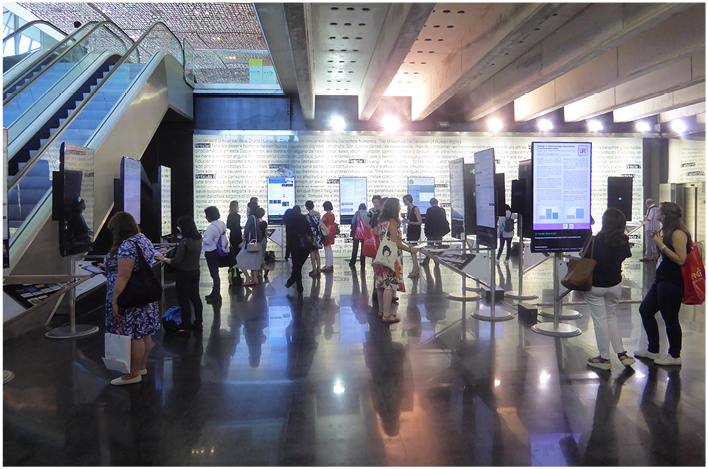
Endometrial Scratch: Time to Reconsider?
ENDOMETRIAL scratch (ES) is a common adjuvant treatment in in vitro fertilisation (IVF), whereby a small scratch to the lining of the uterus is made prior to implantation; it has been suggested that the resulting inflammation is conducive to successful implantation. However, new data from a large, randomised trial including >1,300 women from 13 fertility centres in 5 countries and presented at the ESHRE Annual Meeting 2018, has shown no benefit to the technique.
The patients were randomised evenly into two groups: ES or no adjuvant treatment. The ES procedure was performed with a Pipelle® cannula (Cooper Surgical Inc., Trumbull, Connecticut, USA) between Day 3 of the preceding cycle and Day 3 of the IVF/embryo transfer cycle. Results in both groups were remarkably similar, with clinical pregnancy rates of 31.4% and 31.2% in the ES and control group, respectively; live birth rates were 26.1% in both groups. The probabilities remained comparable after controlling for various factors, even in patients who had a history of implantation failure, for whom the ES procedure has appeared to produce a benefit in previous studies. “Results from earlier studies have suggested a benefit from endometrial scratching in IVF, especially in women with previous implantation failure. However, many of these studies had a high risk of bias in their design or conduct and did not provide strong evidence,” explained Dr Sarah Lensen, University of Auckland, Auckland, New Zealand.
ES is a very common procedure and, despite its association with moderate pain and bleeding, was found to be recommended by 83% of clinicians prior to IVF in a 2016 survey by Lensen et al. “Our results contradict those of many studies previously published, and, although our trial was the largest and most robust study so far, it can be difficult for one trial to change practice,” said Dr Lensen. Further studies currently being performed by different groups in the UK and the Netherlands will clarify the technique’s efficacy, but the researchers suggest that their data alone should warrant clinicians to reconsider the use of ES. “[…] even based on just our results, I think clinics should now reconsider offering ES as an adjuvant treatment,” concluded Dr Lensen.
Evidence on the Use of Antioxidants in Treating Infertility
SHOULD antioxidant supplements be taken by men with male factor infertility? This was the question posed by researchers of a clinical trial based in the USA, the results of which were reported in a ESHRE press release dated 2nd July 2018. Although there have been previous studies that linked antioxidants to improvements in sperm quality, most of the studies have been limited, whether due to patient heterogeneity, small numbers, nonclinical endpoints, or based on the variety of antioxidant explored. Thus, a stronger evidence base is required.
The study participants numbered 174 couples, and all the men in the study had received a diagnosis of male factor infertility. At the beginning of the trial, four sperm parameters were measured: levels of sperm concentration, sperm motility, sperm morphology, and the rate of DNA fragmentation. These parameters were also measured at 3 months. Another trial endpoint was natural conception. The men in the study were allocated to either receive a placebo or treatment with an antioxidant tablet. The tablet contained folic acid, zinc, selenium, L-carnitine, and vitamins C, D3, and E.
The results at 3 months demonstrated no significant differences in morphology, motility, or DNA fragmentation; there was a slight overall difference in sperm concentration between the two study groups. Additionally, there was no significant difference found in the endpoint of natural conception; the pregnancy rate was 10.5% for the antioxidant group and 9.1% in the placebo group. Following continued antioxidant tablet treatment or placebo for the male partner and three cycles of clomiphene and intrauterine insemination for the female partner, the natural conception rates were still comparable. The presenter of the study at the ESHRE Annual Meeting, Prof Anne Steiner, University of North Carolina, Chapel Hill, North Carolina, USA, explained: “The results do not support the empiric use of antioxidant therapy for male factor infertility in couples trying to conceive naturally.”

No Link Found Between Assisted Reproduction and Ovarian Cancer
HORMONAL stimulation during in vitro fertilisation (IVF) has caused concern in recent years regarding an increased risk of ovarian cancer. However, results of a study reported in a ESHRE press release dated 3rd July 2018 show no causal association between the fertility treatment and the risk of ovarian malignancy; instead, female infertility may be associated with an increased risk.
The Danish study used the cancer and reproductive health registries of Denmark to match 58,472 IVF or intracytoplasmic sperm injection-treated women with 549,210 non-treated women from the general population between 1994 and 2015. Although the results showed a slight increase in the overall risk of ovarian cancer among the women who underwent assisted reproductive techniques compared to controls (0.11% versus 0.06%, respectively), these higher rates were also present in nulliparous women and in infertile women. Since fertility treatment of women who were fertile but had male partners who were infertile was associated with a lower risk of ovarian cancer, the researchers concluded that any observed increased risk in ovarian cancer was not due to hormonal stimulation of the ovaries and, instead, was more likely related to female infertility. In addition, the team noted that the increased risk of ovarian cancer was highest in the first 2 years after assisted reproductive treatment, but after 12 years the risk was similar to that of the general population; the authors suggested this pattern was due to an influence of detection bias during treatment.
“We found that the higher risk of ovarian cancer among women having assisted reproduction was only present among those with diagnosed female infertility,” concluded Prof Anja Pinborg, Fertility Department, Righospitalet, Copenhagen University Hospital, Copenhagen, Denmark. Since ovarian stimulation did not increase the risk of ovarian cancer in the general population and the absolute risk of being diagnosed with the cancer remains small, Prof Pinborg described the results as “reassuring” and advised infertile women to move forward with their assisted reproductive treatment.
Trial Data Supports Anti-Müllerian Hormone Analysis for Personalised Rekovelle® Therapy
RESULTS of the Phase III ESTHER-1 trial assessing the effect of using anti-Müllerian hormone (AMH) levels to personalise follitropin delta (Rekovelle®, Ferring Pharmaceuticals, Saint-Prex, Switzerland) dosing were outlined in a ESHRE press release dated 2nd July 2018. The study data emphasised that natural variations in AMH during and between a woman’s menstrual cycles has no clinically relevant impact on ovarian response when using AMH to dose follitropin delta. This further emphasises that AMH measured on any day of a woman’s menstrual cycle can be used to personalise follitropin delta dose.
Follitropin delta is a human recombinant follicle stimulating hormone, approved for ovarian stimulation in women undergoing assisted reproductive technologies. Individualised dosing of follitropin delta is based on body weight and AMH, a biomarker for ovarian reserve that can predict ovarian response. ESTHER-1 results showed, in addition to validating AMH as a biomarker for personalised follitropin delta dosage irrespective of when levels are analysed in the patient’s menstrual cycle, that more women receiving individualised follitropin delta treatment achieved the target response of 8–14 eggs compared to conventional dosing with follitropin alfa.
These findings will have a great impact on assisted reproductive therapies; ovarian response to stimulation can vary considerably between women and extreme responses can have implications on efficacy and patient safety. The validation that follitropin delta dosing can be individualised using AMH level analysis and body weight will ensure that extremes in ovarian response can be avoided, guaranteeing that efficacy and safety are optimised.
Prof Klaus Dugi, Chief Medical Officer, Ferring Pharmaceuticals, summarised the importance of the study results: “I believe these data will further strengthen the growing confidence of doctors in the use of AMH to personalise dosing of fertility treatment for their patients.”


